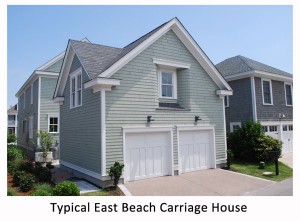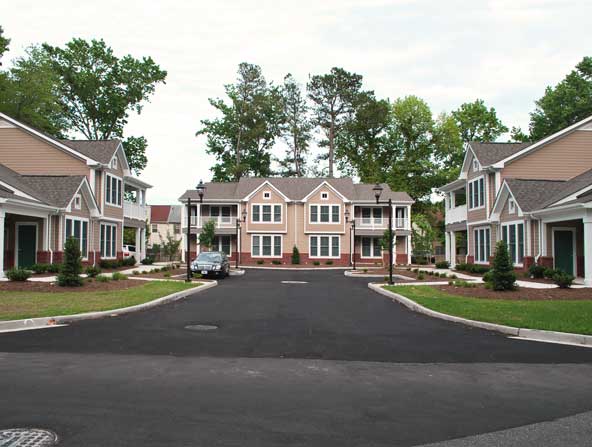You are currently browsing all posts tagged with 'VHDA'.
REMODELING and ADDITION TIPS: an independent lifestyle for seniors
posted on Tuesday, November 5th, 2013 at 10:35 amThe topic of building and remodeling a home for long-term independence is called Aging-in-Place. It is becoming an increasingly important market niche for contractors and home designers since the largest population segment of society is entering the age of their senior years.
Surveys have determined that more than 90% of older adults prefer to remain in their own home into their later years and to make improvements to that home for their own comfort and convenience or downsize into a smaller home with accessibility and convenience features that are already built into the house. In the process of making improvements to their present home it is likely they will increase the property value of that home and would benefit from the advice of remodelers qualified to prioritize projects and improvements that will provide the greatest value for the money.
Remodelers who specialize in this market can earn a certification from completing a training program conducted by the National Association of Home Builders. It is called CAPS or Certified Aging-in-Place Specialists. The CAPS designation is earned by remodeling contractor candidates and designers who successfully complete the coursework prescribed by a joint program designed by NAHB and AARP.
Demographics suggest that the need for this kind of a remodeling project are likely to increase into the future as census data has shown that more than 4 million households already have 3 generations of family members living under the same roof. A survey by the AARP and the National Alliance for Care Giving has determined that more than 35 million households are looking after a family member that is 50 years old or older and some 10 million of these households live with that person.
The generation of baby boomers is the larger generation segment in the American Population, some 80 million of them. They have already begun entering the 60+ age group and will continue to do so over the next 20 years. The individual differences of how they choose to live out their senior years ranges from a segment resisting traditional retirement, others not admitting they are getting older, and some others are simply living longer healthier lives.
Regardless of the individual lifestyle differences of 60+ year old citizens they do likely recognize some limitations to their existing homes. They are probably looking to make some changes to their home so they can stay there as long as possible. The improvements that they are likely to be considering come under the heading of Universal Design that will serve themselves as well as be useful to a younger generation household in a future resale.
Sometimes the remodeling effort is about a household interested in making their home accessible and comfortable for a parent moving in. Other times the project is about improvements to the existing home for aging-in-place for themselves. A common project for the parent or grandparent that is moving into the home of a younger household member is a semi-separated bedroom suite, likely on the first floor level.
 The local zoning ordinances of most municipalities have made attempts to make allowances for additions to homes that provide senior suites. In Virginia Beach a provision has been made for just such an addition that is called a Flex Suite and makes some allowance for separate kitchen facilities in the addition. In neighborhoods like East Beach in Norfolk, VA, the ordinance allows for complete cooking facilities in separate Carriage House apartment and even allows for a renter to occupy the apartment.
The local zoning ordinances of most municipalities have made attempts to make allowances for additions to homes that provide senior suites. In Virginia Beach a provision has been made for just such an addition that is called a Flex Suite and makes some allowance for separate kitchen facilities in the addition. In neighborhoods like East Beach in Norfolk, VA, the ordinance allows for complete cooking facilities in separate Carriage House apartment and even allows for a renter to occupy the apartment.
A convenient bathroom is a critical feature of home to be made accessible in the senior suite. One attractive feature is a roll-in shower, eliminating the need of a raised threshold. The tile décor of this style of shower is not without an appeal to a general population of home buyers attracted to a feeling of openness, naturally lighting and airiness. Other basic improvements to bathrooms could include better lighting, accessible toilets, and contrasting colors. It is also smart to install blocking inside open stud walls for future installation of grab bars.
A senior suite addition on the first floor is not the only option for an aging-in-place improvement. When the property doesn’t allow for it or the homeowner preference is for the senior or master suite to be located on a second floor there is the option for installing an elevator or improving an existing stairway to provide a motorized lift seat. As the projects grow in complexity the necessity for advice from a licensed architect and/or a CAPS contractor will become an obvious first step. Equivalent to CAPS certification courses for Virginia architects is the Universal Design certification provided by Virginia Housing Development Authority, VHDA.
Tags: aging, Aging-in-place, CAPS, care-giver, fex-suite, in-law, independence, remodeling, senior, suites, universal design, VHDA










